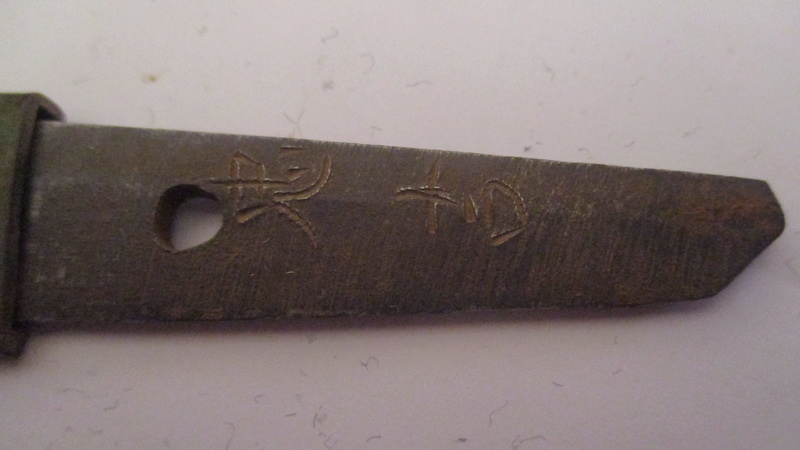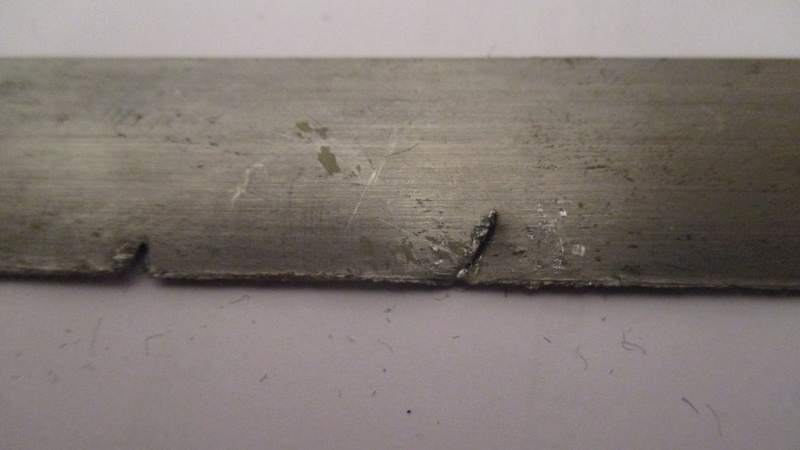Announcement
Collapse
No announcement yet.
short wakizashi blade very used unfortunatly...
Collapse
X
-
Maybe more by child size pirates and such. Haha! Honestly, it probably comes from children playing with these or someone testing the blade on hard objects or such.Originally posted by CED13000 View Posthi
thank's Bob
i think as you
thank you for your confirmation
It is still a pity these blows on the blade
This would have a very nice short wakizashi ....
Do you think these blows on the blade were made during a fight?
thank you
Friendly
Ced
Hope this helps!
Lev
Comment
-
So did the opponent use the back of HIS blade as well?Originally posted by Bob Coleman View PostWhen used in combat, kiricomi or battle scars are found on the surface or back of the blade. The cutting edge was not used to deflect an opponents blow as it would damage the ha or cutting edge.
Seems SOMEONE would have to be using his cutting edge..??..
Comment
-
Gehrmann, I see your point - in a mele, men everywhere swinging at each other; 2 guys turn around and simultaneously swing - boom - on the edge contact. Bob's point is correct in "normal" one-on-one swordsmanship, though, if that existed in combat.Originally posted by GEHRMANN View PostSo did the opponent use the back of HIS blade as well?
Seems SOMEONE would have to be using his cutting edge..??..
I wonder what damage to an edge would look like after contacting some of the better-made helmets, shoulder flanges, body-plates, etc.
All said and done, a Bozo messing around with this in the yard is likely, but who knows?
Comment
-
Hi guys,
Thought I should post what appears to be kiricomi on a prewar mumei blade mounted in kaigunto koshirae. Looks like some have been polished, while other were not. I think it's because the blade could not take another polish. Must have been left as is untill someone took it to the war one last time. A typical example of a gunto for someone on a budget.
Ced hope you won't mind if I post it on your topic.
 Last edited by Staldion; 03-04-2017, 10:19 AM.
Last edited by Staldion; 03-04-2017, 10:19 AM.
Comment
-
Many a time, kirikomi will be left on a blade as a sign of respect by the polisher. Many on the mune (backside) or shinogi-ji (ridgeline) as stated to deflect a blow thogh there are known and famous blades with a cut in the edge. Some extend past the hamon or chipped it beyond repair but are preserved as such! Some consider it an honor since the blade saw combat in the hands of the warriors that wielded them.
However, with the postwar influx of blades in many countries and subsequent abuse, many cits are from abuse/play. Not to say it doesn't happen in Japan.Even so, good polishers tend to leave them sometimes. Consider it their last battles!
Happy Hunting!
Lev
Comment
-
If your aim is to collect Nihonto then do not let the romanticised stories of samurai exploits cloud your judgement. Kirikomi are not desirable and never make a sword more valuable than the same sword without those scars. These are often the stories spun by dealers as they turn their brass into gold.
Kirikomi are usually never sought by serious collectors but may be tolerated.
I am of the opinion that it is not out of respect that a polisher leaves a kirikomi on a blade but out of necessity. If the amount of metal were removed necessary to eradicate it, the blade would be radically reshaped, perhaps removing the hamon or revealing core steel.
Comment
-
Thank you for your answer BruceP, Death-Ace and Beater. I can't talk for Ced but for myself, I am not a nihonto collector, I rather see me as a WW2 collector with a weird focus (for an european I mean) on PTO and specially imperial japanese forces memorabilia (considering the fiasco of French Indochina). I would add that my pockets aren't deep enough to collect nihonto despite the interest I have in japanese eadged weapons. After all we all build our collections on though choices didn't we? I made that one long ago. I have a quasi mint type 98 with seki stamp which makes me so glad each time I look at it . I wanted a kaigunto for display but wanted to kept both of my kidneys and this one matched. I like the fact that the koshirae hold a traditional blade, can enjoy it even with defaults. Was cheaper than my shingunto and seller didn't bullsh!t me about scars. I even took into consideration that it could be from iato practice or child play, I will never know untill the blade starts talking!
Anyway, I fully agree with Beater's advice. Such scars are defaults. And like Stu just reminded us in another thread, value is in the blade! But I can live with it because I know it bring this wakizashi in my price range, the only that I can afford. And maybe it was the same for the guy who took it to world war 2 after all.
Thanks again for reading,
Cheers.
Comment
Users Viewing this Thread
Collapse
There is currently 0 user online. 0 members and 0 guests.
Most users ever online was 10,032 at 08:13 PM on 09-28-2024.







Comment